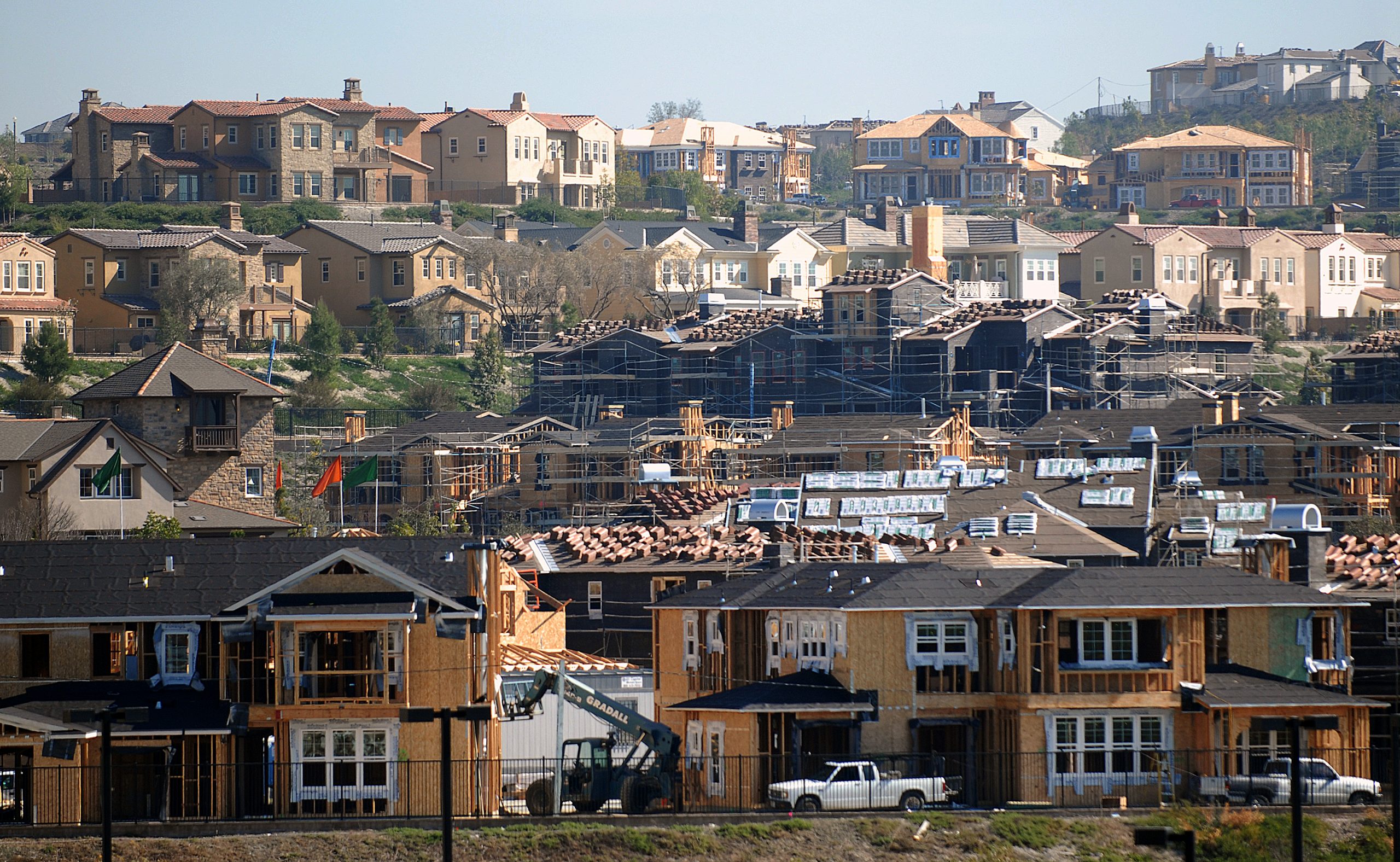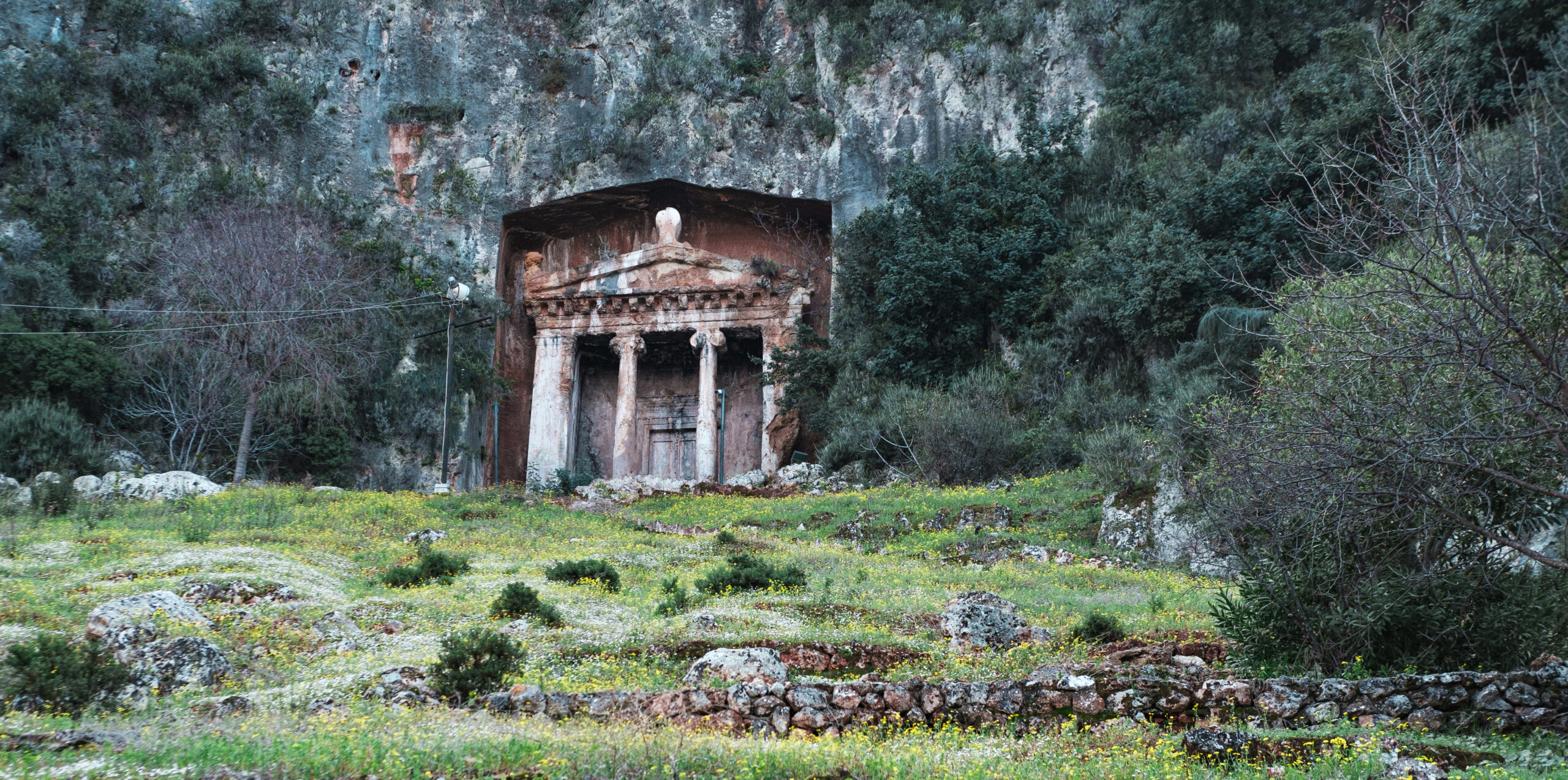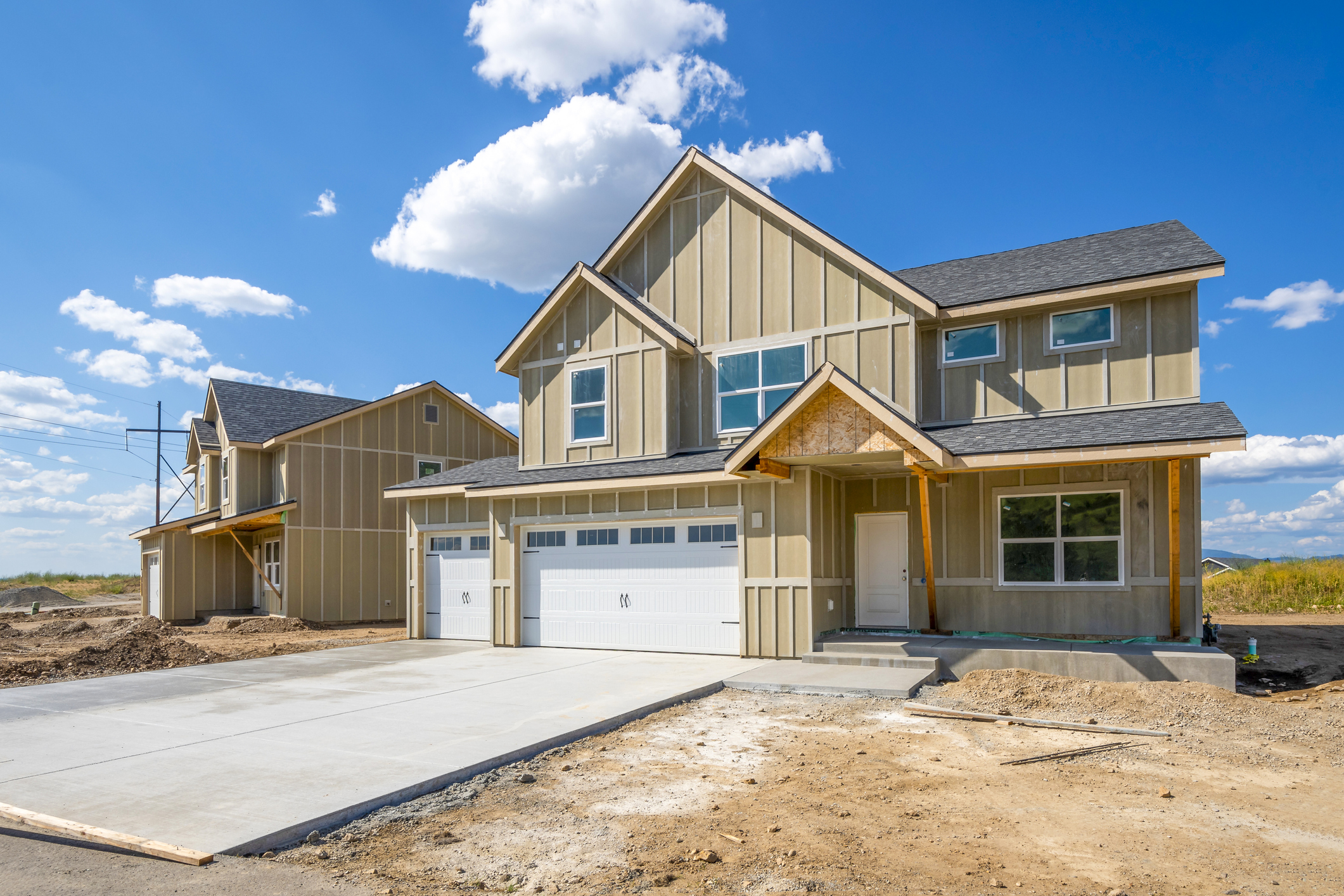Detractors of nationalism indulge in dreamcasting over statesmanship.
A Better Future

America doesn’t need to cram everyone into little boxes; we need to build new cities.
In earlier times, even with a soaring population, Americans knew how to accommodate housing demand. In the eighteenth and nineteenth centuries we built cities from scratch along the frontier. The existing major urban centers—Boston, New York, Baltimore, Philadelphia—all expanded rapidly, both by density and expansion into land on the periphery.
After the Second World War, mass suburbia and its expansion in homeownership ushered in a period of sustained prosperity that lasted until the 1970s. After 1940, according to the U.S. Census Bureau, U.S. homeownership rates grew rapidly, from 44 percent to 63 percent over the next three decades.
But now, in many places, it is exceedingly difficult, even impossible, to build the kind of family-friendly housing long sought by most Americans. Instead we are being left with two negative trends: increasingly low housing affordability for many, and the forced march of a whole new generation into the kind of small, crowded spaces they generally eschew, particularly after they enter their thirties.
The Suburbs Are the Urban Cutting Edge
When academics and the media focus on urban innovation, they tend to look at cities. But the real action—and the best guides to the future—lie with the suburbs. Between 2010 and 2020 the suburbs and exurbs of the major metropolitan areas gained two million net domestic migrants, while the urban core counties lost 2.7 million. Americans have been heading to the suburbs for generations, growing from 13 percent of the metropolitan population in 1940 to 86 percent in 2017, a gradual increase of 2 percent annually.
Exurbs, the locale for most new innovative development, have grown in population at twice the national rate for over a decade. This is where we see the rise of new, privately designed and financed models for building better, more affordable, and even environmentally friendly communities. The technology for creating such communities extends back to the early visions of Frederick Law Olmsted and Britain’s Ebenezer Howard, who originated the idea of “garden cities,” essentially exurban communities where people could work, recreate, and live in the same environment.
These new cities consciously rejected the old suburban notion of serving the central city. Communities like Irvine, south of Los Angeles, function more as job and retail centers than adjuncts to an urban core. The 300,000 residents tend to work more at home, commute less, and have more access to open space than most metropolitan communities.
Irvine epitomizes a historical shift from the suburban “bedroom” model of the 1950s—in communities like Lakewood in the Los Angeles metro area and the Levittowns in Pennsylvania and on Long Island—that provided inexpensive housing for workers in nearby plants and downtowns. The new urban legacy owes much to visionaries like Irvine’s William Pereira, the Woodlands founder George Mitchell, and Columbia’s James Rouse. These communities, suggests Harvard’s Ann Forsyth, fulfilled most of today’s New Urbanists’ underlying aim, and they did so at a grand scale exhibiting “cutting-edge planning and design strategies.”
The Pandemic Opens the Flood Gates
Today this model is spreading rapidly, mostly around fast-growing metropolitan regions like Houston. There, on the far urban fringe, new communities such as Cinco Ranch Bridgeland, Sienna Plantation, Sugar Land, and the Grand Parkway represent the cutting edge of American urbanism in the 21st century. But this is far more than a Texas phenomenon. All but seven of the 50 highest growth counties in combined statistical areas (CSAs) of more than 500,000 residents are almost without exception far from the historical downtowns.
The pandemic made such communities, and suburbs in general, more attractive, with exurban areas building new homes at twice the rate of older communities. Indeed, in the first half of 2021, home sales in the nation’s 50 largest planned communities surpassed expectations, with growth expected to exceed 35 percent. Robert Schottenstein, CEO of Columbus-based M/I Homes, Inc., a builder with 15 projects in the Midwest, Southeast, and Texas, explains, “This is a flight to safety and security. The millennials are getting older, and they are transitioning as they start families.”
A recent Redfin Survey found that people across the country are moving from their home regions at the highest level on record; the highest percentages of home-buyers leaving come from prime “superstar” cities like San Francisco, Los Angeles, New York, Washington, Seattle, and Boston, often to exurbs and smaller towns on the urban periphery. Nor does it seem likely that most people will return to the city, notes pollster Sam Abrams. A Los Angeles Times/Reality Check Insights national poll taken after the November 2020 election found just 44 percent would pick a big city once again. Thirty-two percent of big city dwellers state that they would definitely move away from big cities if they could; this is notably greater than the quarter of those who live in suburbs of big cities and small cities who feel the same way.
For millennials, these communities possess a magnetic attraction. The population of 25- to 34-year-olds in the highest growth counties expanded by 12.8 percent between 2015 and 2019, almost four times their 3.4 percent growth rate nationwide. This contrasts with the assertions of new urbanists like Peter Katz, who asserted that the nation’s largest generation had “little interest in returning to the cul-de-sacs of their youth” and “[would] reverse the decades-old pattern of suburban dispersal.” Indeed virtually all the places ranked by Fortune for best for families are suburban or exurban areas.
Places Positioned for a Dispersed Economy
These exurban communities are also increasingly centers of employment, particularly with the growth of on-line work. From 2010 to 2017, over 80 percent of all job growth was in the suburbs and exurbs. The 50 highest growth counties had an employment increase of more than 2.5 times that of other counties in 2019. In contrast, our biggest metros—Los Angeles, New York, and Chicago—have lagged during the pandemic and its aftermath, and even in Manhattan much office space remains redundant. Even in the greatest traditional cities, growth is now most rapid in outlying areas.
Today many of those who historically filled the high-rise offices—media, analysts, programmers, marketers, designers—also could most easily work from home, notes one 2020 study. Another analysis from the University of Chicago suggests as many as 34 percent of American workers could do their jobs remotely. Some 60 percent of U.S. current telecommuters, according to Gallup, wish to keep doing so for the foreseeable future.
Generally, suburbs and exurbs are ranked as the best places for remote work, while future information technology improvements, especially virtual reality, could support even greater remote working. Things could get ugly as some $2 trillion in commercial real estate debt is due by 2025, particularly in large, transit dependent central business districts. Reluctance among commuters to ride public conveyances, as well as concern over crime and social disorder, may also have an impact. There are even plans for a vast new suburban “downtown” that would service New Jersey’s sprawling communities.
In contrast, San Francisco, with one of the nation’s historically strongest central business districts, has suffered rising office vacancies, three times the pre-pandemic levels. San Francisco companies, according to a Bay Area Council survey, expect employees to come to the office three days a week or less, with barely one in five seeing a return to “normal.” Some three quarters of venture capitalists and tech firm founders, notes one recent survey, expect their ventures to operate totally, or mostly, online.
Finding Great Fault with New Communities?
Despite these market preferences, developers interested in building new cities face enormous challenges. The rapid rise of interest rates will clearly stifle all real estate growth, particularly for first time buyers. But even after the market recovers, new city developers will face determined opposition from planners, academics, the media, and many government officials. Once rejected for social or aesthetic reasons, “anti-sprawl” activists now focus on discouraging building new suburban communities for the sake of the climate. Al Gore has been sniffing against “suburban sprawl” for a quarter century.
In California, the state’s climate-driven ban on single family zoning could make it almost impossible to build planned developments anywhere in the state, notes one high level Irvine company official. This latest regulation, combined with high development fees, strenuous environmental reviews, and requirements to reduce car use have made housing statewide unaffordable for virtually all but those in the top 20 percent of incomes. Even when builders can construct new projects, notes one recent San Diego study, regulations lead them to overbuild expensive, small units rather than the detached homes the market craves.
These political factors help explain why three-quarters of new cities are in less regulated states like Texas, Florida, and Nevada. In Texas, liberal land regulation allows developers to build their own water, sewage, road, and other infrastructure on county lands through Municipal Utility Districts (MUDs). Texas has more than 900 MUDs averaging about 1,000 acres each; about two-thirds are in the Houston metro area. Similarly, Colorado has over 1,800 metro districts, which are similar in purpose and scope to the Texas MUDS. Colorado’s Metro District Education Coalition says that metro districts allow new growth to pay for new public infrastructure.
Can Suburbs Be Green?
Despite the often-apocalyptic claims of green activists, the benefits of forced densification are not impressive. According to projections by the Terner Center at UC Berkeley, working under the assumption that housing development would be limited to infill (no greenfield development), the GHG savings of 1.8 million tons would contribute only one percentage point to the mandated state reduction by 2030.
In contrast the environmental advantages of well-planned private communities can be substantial in large part by reducing commutes. Remote working (both hybrid and full-time) has emerged as the most environmentally friendly way to access employment by eliminating the environmental costs of the physical commute. Bringing jobs close to where people live—or even in their homes—would greatly reduce long-distance commutes and the accompanying energy burn. During the pandemic we saw significant drops of roughly 17 percent in GHG, largely due to the shift to home-based work. The 2021 Annual Mobility Report of the Texas A&M Transportation Institute indicated a 50 percent reduction in traffic congestion delays between 2019 and 2020. The development of autonomous vehicles is expected to accelerate this trend by eliminating driver-caused traffic delays.
With ample park space, room for remote work, and considerable amenities, places like Irvine, and its successors, fit well with a greater consciousness about the environment. As new developments usually use innovative materials and sophisticated systems for controlling energy and water use, these new communities are more environmentally sustainable, as demonstrated by MIT professor Alan Berger, than either traditional suburbs or core cities. Well-planned new developments could reduce greenhouse gases by using rooftop solar systems, electric cars, and, eventually, autonomous taxis. And with their ample open space, these areas are ideal for enhancing biodiversity through thriving populations of insects, birds, and mammals.
A Better Future Beckons—if We Want It
But there’s a downside to the success of these new, private communities: dwindling affordability, particularly for first time buyers. The median house price in Irvine is $1.1 million; houses in The Woodlands, New Albany, or Summerlin have median prices between $400,000 and $500,000, well above the national median price of about $350,000. In the new Canvas Park homes now being sold at Ontario Ranch in Southern California, detached homes go for $600,000 to $700,000, even further above a price where a median income buyer would qualify.
Yet over the next decade, the market for such new housing, notes a recent Kansas Fed report, will expand rapidly, as commutes are cut and more people work from home. But the areas that will attract such developments will be in areas where government plays a helpful rather than obstructive goal. Even in this vast country, lack of new infrastructure is making prices even in traditionally affordable areas like Nashville’s suburbs too expensive. Endless regulatory steps, as we see in California and elsewhere, make large scale new development ever tougher.
To house the next generation, America could turn to innovative new development, as we have done throughout much of our history. Americans still have the tools and the inclination to build new and sustainable communities. What we need now is the will and the regulatory relief that will allow the American dream to extend itself into the balance of this century.
The American Mind presents a range of perspectives. Views are writers’ own and do not necessarily represent those of The Claremont Institute.
The American Mind is a publication of the Claremont Institute, a non-profit 501(c)(3) organization, dedicated to restoring the principles of the American Founding to their rightful, preeminent authority in our national life. Interested in supporting our work? Gifts to the Claremont Institute are tax-deductible.
Blueprints for flourishing in the midst of a decaying civilization.
Meditating on Italy’s cultural treasures can help stop our civilizational spiral.
The worldwide lack of affordable housing can only be resolved politically.
Inept regulation threatens to suffocate the greatest innovation finance has seen in centuries.
Zimbabwe-style monetary policy comes to the U.S. Mint.






